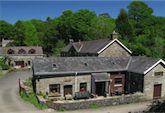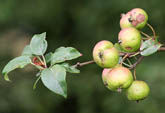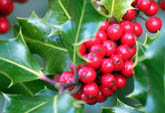November in Wales is a magical time as all the plants and animals make their final preparations for winter. Some nights can be foggy and others crystal clear – the sky as high as the moon and the star constellations bitingly real. Many species of bird that have spent spring and summer in breeding pairs now flock together in large numbers – finches and tits may be seen flitting from tree to tree around the farm. Weather wise, our Novembers are getting milder, although the air can still carry the first hint of frost. Check the Welsh holiday weather for November.
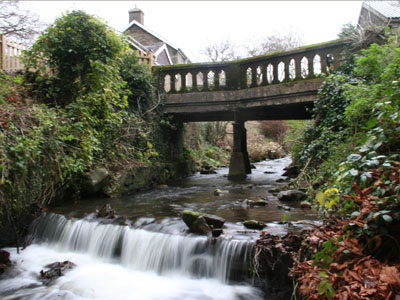
Bridge over the River Clydach at Plas Farm
This picture was taken in the river, just downstream from the holiday cottages. In fact, the corner of Ty Cerbyd can be seen in the background on the left. The bridge is well over a hundred years old and seen everything from a horse and cart to milk tankers to readymix concrete lorriesBridge over the River Clydach at Plas Farm
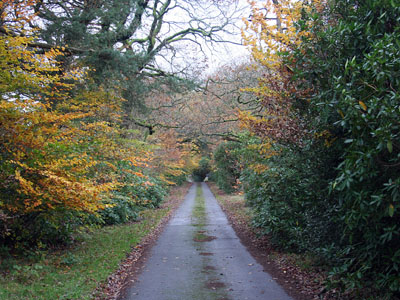
Plas Farm Drive
The farm drive is very attractive during the month of November as the many different types of tree change colour and loose their leaves. Some trees are evergreen which adds to the array of colours. The beech trees are particularly attractive - they are the bright yellow leaves in the picture.Plas Farm Drive
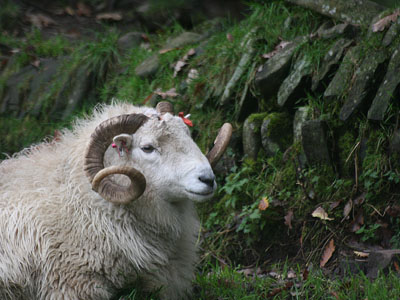
Welsh Mountain Ram Rests by Stone Wall
We have some beautiful dry stone walls at Plas Farm - the one in this picture is in the river field, alongside the farm drive. The sandstone building stones have been placed vertically in the earth bank. At this time of year, mosses and lichens thrive, giving the wall a blanket for winter. The sheep in the picture is a Welsh Mountain Ram, taking a quiet five minutes to do some cudding - that is enjoying a mouthful of previously swallowed food which he has regurgitated and is chewing slowly for a second time!Welsh Mountain Ram Rests by Stone Wall
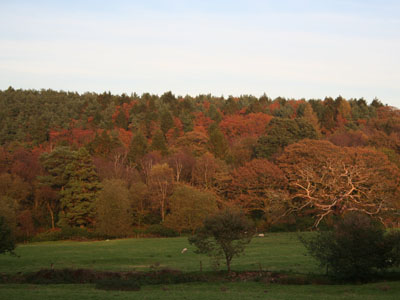
Warm Colours in Early November
The original inhabitants of what is now Plas Farm planted its fields and woodlands with a wide variety of ornamental and indigenous trees to create a parkland atmosphere. This means that, come autumn, the countryside around the holiday cottages is a dazzling show of breathtaking colour. This picture was taken on the Lodge Field in front of the holiday cottages.Warm Colours in Early November
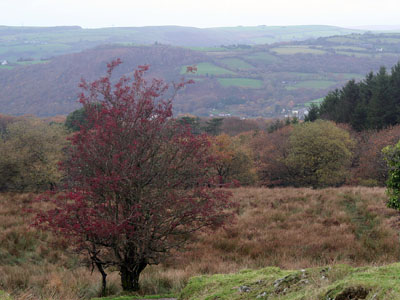
Hawthorn Crataegus monogyna
This picture shows a hawthorn tree laden with red berries, set against the backdrop of the Swansea Valley. Hawthorn berries are extremely popular with birds and this tree is a great place to spot Fieldfares and Redwings, winter migrants to Wales. The rush pasture upon which it grows is a five minute walk from our holiday cottages.Hawthorn Crataegus monogyna
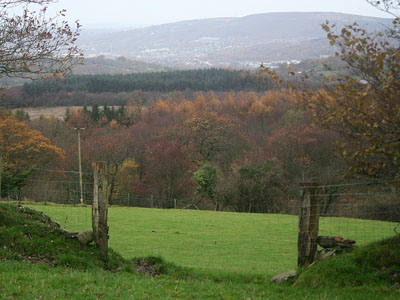
Autumn Colours on the Plas Farm Trail
A view of the Swansea Valley taken from the grassy slopes behind the holiday cottages. The towns of Pontardawe and Clydach are in view.Autumn Colours on the Plas Farm Trail

Winding Lane at Plas Farm
Another view at Plas Farm. This was taken on the lane which runs from our holiday cottages up to Blaenant farm. You will notice that the hawthorn tree in picture 2 of this gallery has now lost all its berries to hungry birds. The hills in the background are the western slopes of the Swansea Valley.Winding Lane at Plas Farm
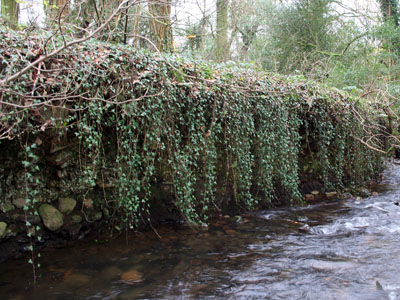
An Ivy Curtain on the River Clydach Hedera Helix
This picture was taken some 50 yards downstream of the holiday cottages at a place where the River Clydach is undercutting the bank. The ivy grows on the ground amongst the oak trees that line the river bank has formed a curtain which overhangs the bank and touches the rushing water. At Christmas ivy is traditionally brought inside to create attractive Christmas decorations and for use in festive wreaths.An Ivy Curtain on the River Clydach Hedera Helix
![Grey Heron [Ardea cinerea] in Beech Tree](https://www.welshholidaycottages.com/wp-content/uploads/2014/12/039-heron-301106.jpg)
Grey Heron [Ardea cinerea] in Beech Tree
The grey heron (Europe's largest heron) is a common visitor to Plas Farm and may be seen at various times throughout the year - occasionally from your holiday cottage window. The heron in this picture was standing atop one of the huge beech trees on the lawn in front of the holiday cottages. Herons suffer greatly during severe weather although the longest living individuals have attained 25 years. It is usually a solitary bird and is sometimes seen, standing in a large puddle on the paddock in front of the holiday cottages or sometimes fishing in the river behind the cottages.Grey Heron [Ardea cinerea] in Beech Tree
